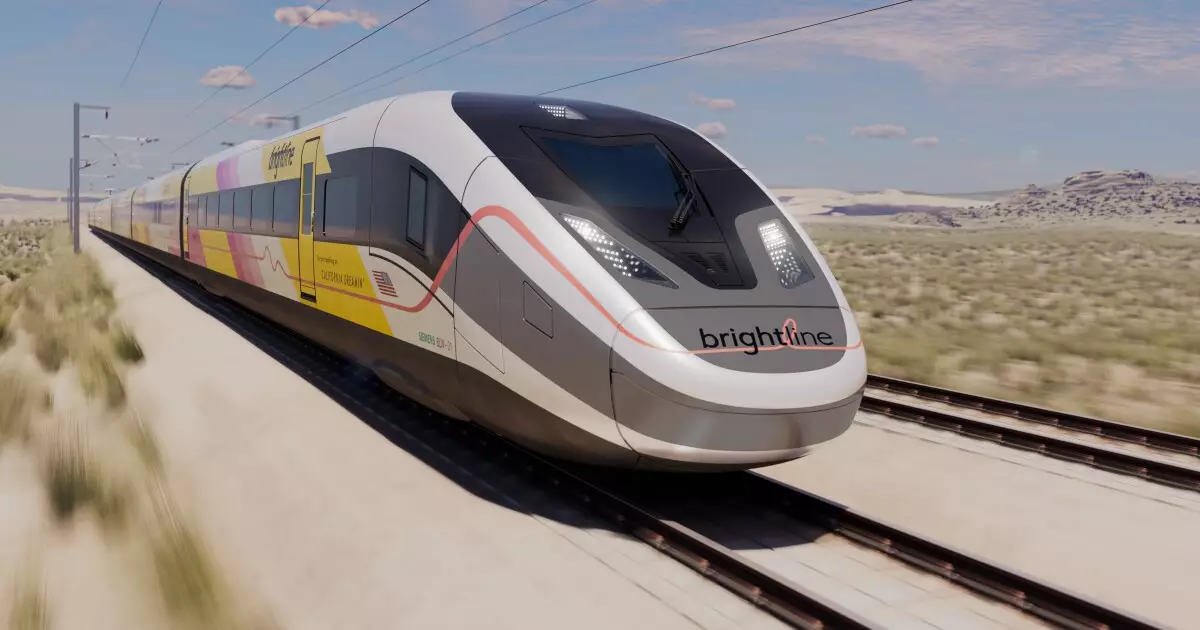The advent of high-speed rail systems has been met with both excitement and skepticism across the United States. Brightline West, a project aimed at connecting Las Vegas and Los Angeles via an electric bullet train, has recently taken a significant step forward. On a noteworthy Thursday, the project entered the market with a monumental issuance of $2.5 billion in unrated private activity bonds (PABs), featuring yields that could easily attract investors’ attention. This deal aims to not only finance the ambitious rail project but also pave the way for a future of fast, efficient, and environmentally friendly transportation options across the country.
The Brightline West deal has generated considerable interest, resulting in over $3.4 billion worth of orders from 75 investors, indicating a strong appetite for high-yield municipal bonds despite their unrated status. This unprecedented demand reflects not only the perceived potential of the project but also the exceptional yield offered by these bonds—reportedly featuring 9.5% coupons that have been described as “eye-popping” by industry insiders. Jim Lyman, a senior vice president at Belle Haven Investments, highlighted the liquidity benefits and the solid economic premise underpinning the investment, making the bonds difficult to resist.
Investors were particularly attracted to how the bond structure was crafted. By issuing a single $2 billion CUSIP, Brightline West aimed to enhance liquidity, setting itself apart from the more conventional approaches taken in the municipal bond market. This structure, while rare, may prove advantageous in attracting ongoing investor interest and in facilitating efficient trading.
Despite the positive reception of the initial bond issuance, Brightline West faces considerable challenges as it moves forward. The project has a total cost estimation of approximately $12.4 billion, and securing the remaining $6 billion bank facility within the next 180 days is crucial for maintaining progress. Failure to obtain these additional funds could trigger a mandatory bond redemption clause at a premium price, raising concerns for bondholders.
The upcoming periods are critical for the project’s financial stability, as the regional dynamics of U.S. federal transportation policy could affect funding opportunities. The recent federal grant, valued at $3 billion, secured under the Biden administration, adds another layer of uncertainty given that some federal support has come under the scrutiny of political shifts. The potential rescindment of federal funds directed at other high-speed rail initiatives, like California’s, reinforces a cautious outlook regarding the federal government’s role in supporting transportation projects.
Investor sentiment has fluctuated significantly in response to the national discourse on funding and federal support for transportation initiatives. Concerns over the future of federal grants have permeated discussions, particularly as contrasting narratives surrounding different rail projects emerge. Brightline West has been emphasized positively against the backdrop of California’s slow-moving high-speed rail efforts.
However, some investment firms, like GW&K Investment Management, remain skeptical due to the inherent uncertainties linked with high-yield rail bonds. Having opted out of previous Brightline financing opportunities, GW&K’s position signifies that while Brightline West possesses compelling attributes, the larger economic environment of high-speed rail investments induces caution.
As Brightline West gears up to commence construction, expectations surrounding the project’s economic viability will be put to the test. A crucial pivot will be the firm’s ability to transition from high-yield financing to potentially seeking investment-grade ratings for its outstanding bonds, a move analogous to its predecessor, Brightline Florida.
Setting its sights on a launch timeline of December 2028, the notion of this particular rail line potentially missing the much-anticipated Los Angeles Olympics raises additional stakes. The integrity of this project, alongside a commitment to completing construction on time, represents a litmus test for both the firm and the high-speed rail movement as a whole.
Brightline West’s bond offering serves as a salient case study on the current state of high-speed rail finance in the United States. With promising yields, notable investor participation, and strong backing, the project reflects an optimistic future for environmentally friendly rail travel. Yet, the uncertainties concerning additional funding and federal support linger like clouds over a bright future. As the project unfolds, the outcome of Brightline West could define the robustness of high-speed rail initiatives and their desirability as a sustainable transport alternative for Americans.

